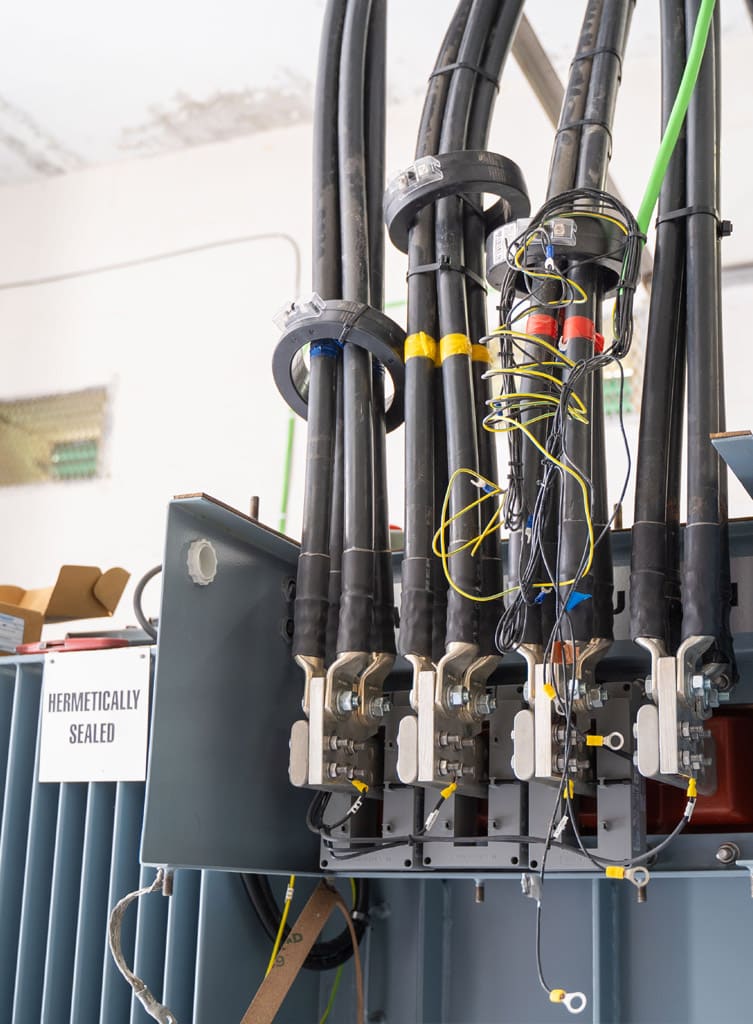
Powering the Future from Below
August 10, 2025

The Client is at the Centre of Everything We Do
August 2, 2025
Brunch with a Smile
August 12, 2025Malta’s electricity demand is set to surge by 25 per cent in the coming years. Enemalta has embarked on a €90 million infrastructure project to futureproof Malta’s energy grid and ensure every kilowatt reaches us reliably, and efficiently.
Every time we flick a light switch, power up our espresso machine, keep our food fresh in the fridge, turn on the AC or charge our phone, we rarely stop to think about the electricity that makes it all possible.
Power allows us to go about our lives; it is expected, and invisible. And, we rarely give any of this a second thought, until it’s gone, a situation Enemalta hopes will become less and less frequent as it proceeds with one of the most significant infrastructure upgrades in decades.
The island’s electricity network is currently being reinforced to handle not only the increasing demands of today, but also tomorrow’s energy challenges. Driving this transformation is a strategic combination of new cable connections and a six-year network reinforcement plan, now in its third year, Enemalta CEO Ryan Fava says.
At the heart of this strategy lies a clear goal: to reduce the risk of network difficulties that lead to power disruptions. And when issues do occur — whether due to weather, technical faults, or surges in demand — the upgraded system will be able to isolate and reroute power with far greater speed. This means shorter downtimes and a more resilient service for everyone, from households to high-demand commercial kitchens.
A stronger grid
One of the most visible parts of this transformation is the extensive laying of underground cables, marked by the bright orange barriers that have been popping up along the island’s roads and urban streets.
To date, 82 kilometres of underground cables have been installed in numerous localities — including Żurrieq, Rabat, Mosta, Naxxar, Cottonera, Kirkop, Żabbar, Luqa, and Gozitan towns like Nadur, Xagħra, and Munxar (Xlendi) — following a €55 million investment.
This has entailed roads being dug up to place the cables underground, making them less susceptible to environmental damage and more secure in the long term. Not just, electricity needs to be managed, transformed, and redirected. That’s where substations come in.
As part of the upgrade, 57 new substations have been constructed, and 76 existing ones have been modernised with new switchgear to allow for better control and flexibility in managing electricity flows.

These upgrades mean that if a fault occurs in one area, power can be diverted more rapidly and efficiently, reducing downtime significantly. For industries like hospitality, where every minute of lost power can impact service, this kind of responsiveness is crucial.
Phase two: 60km of additional new cables
At the beginning of the year, Enemalta, in collaboration with Infrastructure Malta and Transport Malta, started works to reinforce an additional 60 kilometres of underground cables.
This €35-million project required intricate planning to minimise disruptions, especially in high-density localities, such as Birkirkara, Mellieħa, Attard, Fgura, Tarxien, Ħamrun, Gżira, Żejtun, St Paul’s Bay, Sliema, and St Julian’s, many of which are key commercial and dining hubs.
An additional 10km of underground cable works in Birkirkara and reinforcement efforts in Marsaskala are also underway after Enemalta succeeded in securing EU funds. In Mġarr’s Palma area, older overhead lines are being decommissioned and replaced with safer, more reliable underground systems.
Enemalta’s teams have been working as rapidly as possible to minimise disruptions and wrap up the works so that by the beginning of summer all 21 localities, with the exception of St Julian’s and Għaxaq, will be complete.
Strengthening distribution centres
Distribution centres, the critical nodes where power is dispatched across regions, are also being overhauled. In Naxxar and Siġġiewi, excavation is ongoing, while civil works are set to begin in St Andrews later this month, together with the addition of a powerful new 30kVA transformer. In Msida, one of the busiest hubs, the switchgear has already been replaced temporarily, with the old system being phased out.
Once complete, this location’s capacity will double, providing essential support to surrounding urban areas. Meanwhile, in Mosta, a new 33kV switchgear installation is underway, to step up reliability and future capacity.
Planning for the future
All this forms part of Enemalta’s broader vision to future-proof Malta’s energy grid. And, with electricity demand expected to surge by 25 per cent over the next six years — driven by population growth, digital infrastructure, and increased electrification in transport — the need for a more flexible, high-capacity grid has never been greater.
Phase two: 60km of additional new cables
At the beginning of the year, Enemalta, in collaboration with Infrastructure Malta and Transport Malta, started works to reinforce an additional 60 kilometres of underground cables.
This €35-million project required intricate planning to minimise disruptions, especially in high-density localities, such as Birkirkara, Mellieħa, Attard, Fgura, Tarxien, Ħamrun, Gżira, Żejtun, St Paul’s Bay, Sliema, and St Julian’s, many of which are key commercial and dining hubs.
An additional 10km of underground cable works in Birkirkara and reinforcement efforts in Marsaskala are also underway after Enemalta succeeded in securing EU funds. In Mġarr’s Palma area, older overhead lines are being decommissioned and replaced with safer, more reliable underground systems.
Enemalta’s teams have been working as rapidly as possible to minimise disruptions and wrap up the works so that by the beginning of summer all 21 localities, with the exception of St Julian’s and Għaxaq, will be complete.
Strengthening distribution centres
Distribution centres, the critical nodes where power is dispatched across regions, are also being overhauled. In Naxxar and Siġġiewi, excavation is ongoing, while civil works are set to begin in St Andrews later this month, together with the addition of a powerful new 30kVA transformer. In Msida, one of the busiest hubs, the switchgear has already been replaced temporarily, with the old system being phased out.
Once complete, this location’s capacity will double, providing essential support to surrounding urban areas. Meanwhile, in Mosta, a new 33kV switchgear installation is underway, to step up reliability and future capacity.
Planning for the future
All this forms part of Enemalta’s broader vision to future-proof Malta’s energy grid. And, with electricity demand expected to surge by 25 per cent over the next six years — driven by population growth, digital infrastructure, and increased electrification in transport — the need for a more flexible, high-capacity grid has never been greater.


For the restaurant industry and other power-reliant
sectors, these improvements are more than just
technical milestones; they’re operational lifelines. Better
infrastructure means fewer service interruptions, and
greater confidence in delivering seamless customer
experiences.
It’s not just about reliability, either. It’s about readiness. With a growing push toward cleaner, smarter power solutions, the grid needs to be flexible enough to adapt. The current reinforcement plan is a foundation for that transition.
A quiet transition beneath our feet
Electricity is one of those things we only think about when it’s gone. But the work happening behind the scenes, and beneath our feet, is setting Malta up for a more secure, sustainable future.
Whether you’re sipping an espresso in a Sliema café or planning where to next charge your electric car, our team and our network is evolving to become stronger, smarter and more reliable.

It’s not just about reliability, either. It’s about readiness. With a growing push toward cleaner, smarter power solutions, the grid needs to be flexible enough to adapt. The current reinforcement plan is a foundation for that transition.
A quiet transition beneath our feet
Electricity is one of those things we only think about when it’s gone. But the work happening behind the scenes, and beneath our feet, is setting Malta up for a more secure, sustainable future.
Whether you’re sipping an espresso in a Sliema café or planning where to next charge your electric car, our team and our network is evolving to become stronger, smarter and more reliable.




